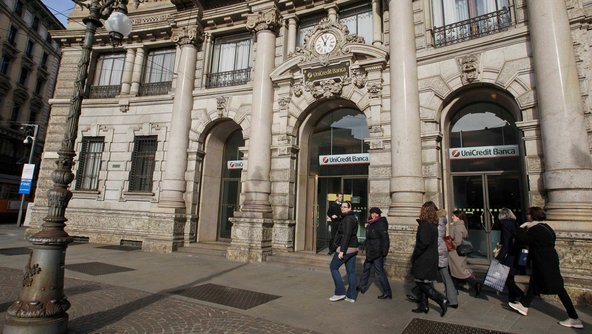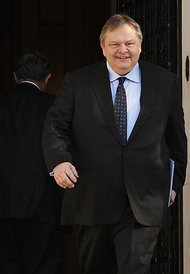PARIS — Europe broke out of recession in the second quarter of the year, official data showed Wednesday, amid stronger domestic demand in France and Germany, ending a six-quarter downturn that has sapped confidence and thrown millions of people out of work.
The gross domestic product of the 17-nation euro zone grew by 0.3 percent in the April-June period from the previous three months, when the economy contracted by 0.3 percent, according to a report from Eurostat, the statistical agency of the European Union. That was slightly better than the 0.2 percent growth economists had been expecting.
On an annualized basis, the euro zone grew by about 1.2 percent in the second quarter, short of the 1.7 percent second-quarter showing by the United States and 2.6 percent in Japan, but nonetheless a relief to the Continent, which has weathered an unemployment rate that has risen to 12.1 percent and a sovereign debt crisis that raised existential questions about the euro.
The economy of the European Union as a whole, which consists of 28 nations, also grew by 0.3 percent in the second quarter.
Germany grew by 0.7 percent, after stagnating in the first quarter. The gains were led by demand from households and government, the Federal Statistical Office reported from Wiesbaden, while exports and investment also rose. The news bolsters Chancellor Angela Merkel as her coalition government prepares for September elections.
France, which had declined for the two previous quarters, posted 0.5 percent quarterly growth, as household spending grew and companies increased exports of goods and services, though investment declined slightly. Pierre Moscovici, the French finance minister, noted that it was the best showing since the first quarter of 2011, before President François Hollande took office, and hailed the result as justifying the government’s economic policies.
The fact that households in Germany and France helped to drive the rebound “suggests that the recent period of relative calmness in the euro zone is encouraging core consumers to spend money and might raise hopes of a narrowing of the economic imbalances within the currency union,” Jonathan Loynes, an economist in London with Capital Economics, wrote in a research note.
Still, Mr. Loynes wrote, the weaker European economies, particularly those hurt by the sovereign debt crisis, “remain a very long way from the rates of expansion required to address their deep-seated problems of mass unemployment and cripplingly high debt.”
“The recession may be over,” he added, “but the debt crisis is decidedly not.”

Article source: http://www.nytimes.com/2013/08/15/business/global/euro-zone-economy-grew-0-3-in-2nd-quarter-ending-recession.html?partner=rss&emc=rss




